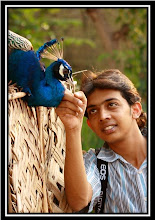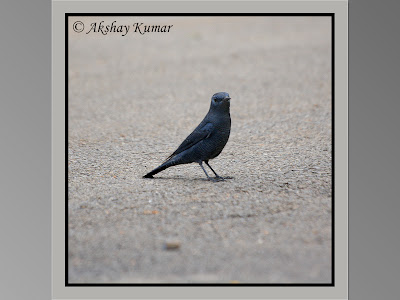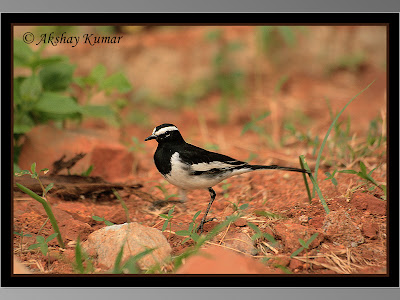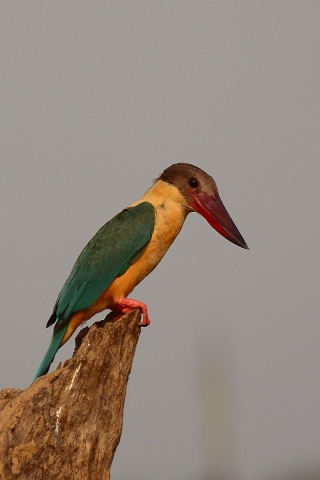Akshay Manjunath "The Naturalist"
About Me

- Akshay Manjunath Neo Naturalist
- Bangalore, Karnataka, India
- Welcome! My name is Akshay an amateur Naturalist born in India; I’m an avid nature and wildlife photographer who has learned from practice and observation -- lots of both! I love to talk wildlife, Conservation, photography, swap stories,. Ecology and Wildlife are my passion since my childhood days. I spend most of my weekends in places where i could to study different flora and fauna both in wild and captivity and, making notes on the observations made. I love to work on field and very passionate to study the Ecology and behavior of animals around me. I regularly attend several nature camps, and conduct presentations and training sessions to school Children and Villagers on Basic Identification of Snakes, Wildlife and their importance in Nature. I was fortunate to get selected as a volunteer for 10 days each in Tiger and Elephant census in Southern India conducted during the year 2009 and 2010 respectively. This blog gives me a place to share my experiences with Mother Nature. Thanks for stopping by! Your comments are solicited.
Wednesday, 6 June 2012
Tuesday, 4 October 2011
Dhole – Indian Wild Dog (Cuon Alpinus)
Physical Description:
Dental formula Incisors 3/3: Canines 1/1: Premolars 4/4: Molars 2/2
Body length: c.100 cm
Tail length: c.40 cm
Weight: females 12-16; males 14-18 kg
Coat colour: usually a red coat (also brown, yellowish or grey) often with white front & belly & black tail.
Dental formula Incisors 3/3: Canines 1/1: Premolars 4/4: Molars 2/2
Body length: c.100 cm
Tail length: c.40 cm
Weight: females 12-16; males 14-18 kg
Coat colour: usually a red coat (also brown, yellowish or grey) often with white front & belly & black tail.
The Dhole or Asiatic Wild Dog (Cuon alpinus) is about the size of a border collie (12-18 kg), but looks quite different. The coat is usually a rusty red colour, but varies regionally from sandy yellow to dark grey. Usually it has a black bushy tail and white patches on its chest, paws and belly. Its ears are rounded, and its hooded amber eyes portray an intelligent nature.
Within the canid family the dhole is something of an enigma. It doesn't fit neatly into any of the sub-families (i.e. the foxes or wolf-like dogs) and is classified in a genus of its own - Cuon. Among its unusual features is a strange whistle call which it uses to re-assemble the pack when animals become separated in dense forest. The dhole also has more teeth than most other dogs and has a shorter jaw with one less molar on each side of its lower jaw.
Social Behavior:
The dhole is a highly social and cooperative animal, living in organized packs of around 10 individuals. Groups often contain more males than females, with usually just one breeding female. Occasionally, large groups of over 40 dogs have been seen, possibly arising from the temporary fusion of neighboring packs.
Together with the grey wolf, African hunting dog and Amazonian bush dog, the dhole is one of the few dogs that regularly hunt in packs. This requires intelligence, co-ordination, and sometimes courage! In India, one of the dholes’ favorite preys is the medium-sized spotted deer. On occasions, however, it will tackle even larger prey like the sambar, and highly aggressive prey like the wild boar. With such dangerous quarry, the dogs can literally risk their lives to secure the food they need to survive. Communal hunting is particularly important during the breeding season when pack members return to the den to regurgitate food for the mother and pups. Sometimes, however, dholes prefer to hunt individually or in pairs, focusing on smaller prey such as hares.
Habitat and Geographical Range
Habitat: usually forest (dry deciduous, moist deciduous, tropical rain forest), also meadows & steppe. The dhole normally lives in forest habitats, but can also eke out an existence in the open steppes of Kashmir and Siberia. As the Latin name, Cuon alpinus suggests, the dhole is often found in hilly or mountainous regions. The dholes’ historical range reflects this great adaptability, extending from India to Russia, and down through China to Malaysia and Indonesia (Java being the southern limit). In recent decades, however, there has been massive habitat loss within this region. Today, very little is known about the dholes’ distribution, but restricted surveys indicate serious decline and fragmentation of the former range. The best remaining populations are probably to be found in central and southern India, but even their stability is in question. The urgent need for more information on the dholes’ present distribution has been highlighted in the latest IUCN Action Plan for Canids. In response to this plan, DCP have designed a sighting form and questionnaire survey and are compiling information on the dholes status and distribution. Armed with such knowledge we will be in a much better position to mobilize direct conservation action.
Diet:
Almost exclusively meat: usually deer, but also wild boar, hares, depending on availability. The dhole eats wild berries, insects, and lizards. Packs of dholes feast on mammals ranging from rodents to deer. Some of the dhole’s favorites include wild pigs, hares, wild goats, sheep, and occasionally a monkey. Unlike many other "dogs," the dhole seldom kills by biting the throat. Larger mammals are attacked from the rear, while smaller ones are caught by any part of the bodies. The smaller mammals are killed by a swift blow to the head; the larger mammals are immediately disemboweled. Dholes compete for the food, not by fighting, but by how fast they can eat. An adult dhole can eat up to 4kg (8.8lbs) of meat in one hour. Two to three dholes can kill a 50kg (110 lb) deer in less than two minutes, and they begin to feed on it before it is dead. The larger prey rarely die from the attack itself, but from blood loss and shock as their intestines, heart, liver, and eyes are feasted upon.
Behavior
Dholes live in packs ranging from 5 - 12. They interact with other dholes outside of their own group, but the original pack rarely exceeds 20. They are similar to the African Wild Dog in that they engage in cooperative group hunting and group care of young. Dholes are very fond of water. After meals they race to a water site, and sometimes, if the water is near their kill, dholes will leave their food for a small drink of water. They have also been spotted sitting in shallow pools of water regardless of the temperature. Just as domestic dogs, dholes wag their tails. There is rarely any evidence of aggressiveness among pack members ( except for the cubs, who like to play fight) and there is almost never any bullyingInteresting Facts: Did you know
- The dhole has some extraordinary vocal calls - it can whistle, scream, mew, and even cluck like a chicken
- It's been a distinct species for several million years.
- It can urinate while doing a handstand on its front two legs
- It breeds communally with most pack members helping to feed or guard the pups.
- When hunting as a pack it can subdue prey over 10 times its own body weight, and can even fend off a tiger!
- It exploits a variety of habitats from tropical rain forest and dry-deciduous jungle, to cold alpine forest and open plains.
- Its dental formula is unique among the dog family.
- It is a capable swimmer and often drives its prey into water.
Reference: Encyclopedia of Life.
Reference: Encyclopedia of Life.
Sunday, 17 July 2011
"BACKYARD BIRDS"
Basic bird facts:
1. Birds are warm-blooded animals. They have wings, feathers and a beak. Birds do not have any teeth.
2. Most, but not all, birds can fly. Not all flying animals are birds. For example, bats are not birds.
3. Birds have strong hearts. This is important because their heart helps them breathe easier when they fly.
4. Most birds eat insects. Some birds – like owls and eagles – are meat eaters. Other birds – like a hummingbird and Canada goose – are mostly plant-eaters.
Are any birds poisonous?
There are only two known poisonous birds. One is the Hooded Pitohui or "garbage bird". The other is the Ifrita. The poison is found in the bird's feathers and skin. The poison probably comes from a plant that the birds eat.
Homeowners play a major role in pesticide consumption. Use natural garden pesticides.
Homeowners use up to 10 times more chemical pesticides per acre on their lawns than farmers and spend more per acre, on average, to maintain their lawns than farmers spend per acre on crops.
Fortunately, homeowners have many opportunities to lessen the impacts of pesticides on birds and minimize bird deaths, by using natural garden pesticides;
Reduce your dependence on pesticides and use natural garden pesticides. Practice prevention and minimize the build-up of pests, thus reducing the need for pesticides.
1. Move piles of wood away from the house and elevate them off the ground;
2clear away litter, garbage, and pet droppings; and provide good drainage to prevent standing water that will attract pests such as mosquitoes.
Plant native grasses, shrubs, and trees. Natural Grasses for Birds This will help decrease the need for fertilizers and watering, as well as pesticides, because native plants are often hardier than non-native plants and less susceptible to pests and disease. Contact your County Cooperative Extension Service for help in identifying native plants for your region. Put an assortment of plants in your yard to increase biological diversity and encourage a variety of beneficial organisms that provide natural pest control.
Rotate the plants in your annual garden to reduce pest buildup and maintain soil quality.
Grow plants that are natural insect repellents, such as lemon balm, among your flowers and vegetables to help keep unwanted insects away.
Choose natural garden pesticides and controls whenever possible. In your garden, try mulching to avoid weed growth, and spading, hoeing, or pulling up weeds. For your lawn, mow frequently and set your mower at 2 to 3 inches. This encourages a healthier, thicker lawn better able to survive drought, tolerate insect damage, fend off disease, and shade out weeds that are attempting to germinate and grow.
Use selected pesticides and apply them carefully. If you must use a chemical pesticide, use one that is specifically registered for your needs and has the least environmental impact. Apply it in a controlled and localized manner to help prevent contamination of surrounding areas by aerial drift, runoff, or other means. Contact your County Cooperative Extension Service or local nursery for help in identifying pesticides that most closely meet these criteria. Always closely read and follow the directions on the product label when applying pesticides. Be aware that many “organic” pesticides may be just as toxic as synthetic pesticides.
Properly dispose of surplus pesticides according to product labels or by checking with local solid waste management authorities.
Attract birds! Birds play an important role in natural garden pest control. Even leaf-eating birds prefer nutritious insects when building strength for parenthood. In fact, insects are a major part of many songbirds’ diets. Design your yard to provide ample food, cover, and shelter for birds, and place a birdbath in the center of your garden. (Birds can usually find enough food, but adequate water is often hard to come by.)
Attracting wild birds is a good, safe way to combat pests!
Mentioned below are the list of birds found at my backyard
Mentioned below are the list of birds found at my backyard
References:
 |
| Pied Bushchat Male |
 |
| Common Blue Kingfisher |
 |
| Koel Female |
 |
| Red Whiskered BulBul |
 |
| Great Tit |
 |
| Juvenile Scaly Breasted Munia |
 |
| Scaly Breasted Munia (Male) |
 |
| Myna |
 |
| Spotted Owlet |
 |
| Pied Bushchat (Female) |
 |
| Blue Rock Pigeon |
 |
| Ashy Prinia |
 |
| Purple Sun Bird |
 |
| Indian Robin Juvenile (Female) |
 |
| Indian Robin Juvenile (Female) |
 |
| Indian Robin (Male) |
 |
| Scaly breasted munia(Female) |
 |
| House Sparrow(Female) |
 |
| House Sparrow (Female) |
 |
| House Sparrow (Male) feeding on Grass Hopper |
 |
| Spotted Dove |
 |
| Spotted Dove |
 |
| Purple Sun Bird |
 |
| Purple Rumped Sun Bird( Male) |
 |
| Blue Rock Thrush |
 |
| Wag Tail |
.
Sunday, 26 June 2011
“The Naturalist and the Trinket Snake”
Scientific Name: Coelognathus helena monticollaris
 |
| Trinket Snake |
Size:- Adult: 70 cm
- When Born: 25 cm
- Maximum: 1.5 m
Non Venomous Snake
Appearance: The light brown body with regular black cross bars. It can be identified by the broad dark stripe running along each side of the hind body to the tail tip, two short and dark parallel stripes on the neck, and an oblique stripe running from each eye to the outer edge of the mouth. Sometimes there may be another vertical stripe below the eye.
Nature: It is very famous for its threat display but the snake can be handled with care. They do strike repeatedly when threatened. Active by day and night.
Distribution: Endemic to Western Ghats and some regions around (Karnataka, Tamil Nadu, Kerala, Maharashtra and Goa). In Maharashtra found in ever green forests.
- When Born: 25 cm
- Maximum: 1.5 m
Non Venomous Snake
Appearance: The light brown body with regular black cross bars. It can be identified by the broad dark stripe running along each side of the hind body to the tail tip, two short and dark parallel stripes on the neck, and an oblique stripe running from each eye to the outer edge of the mouth. Sometimes there may be another vertical stripe below the eye.
Nature: It is very famous for its threat display but the snake can be handled with care. They do strike repeatedly when threatened. Active by day and night.
Distribution: Endemic to Western Ghats and some regions around (Karnataka, Tamil Nadu, Kerala, Maharashtra and Goa). In Maharashtra found in ever green forests.
Habitat: During summers, these snakes inhabit the termite mounds and crevices of rocky places while in winter, they prefer the low lying bushes and trees
Feeds on: Just like the famous rat snake of America, the trinket is prodigious rodent eating machine. It feeds on rats, lizards and small birds
Reproduction: The female snake lies around 6 - 8 long slender eggs. The young ones resemble the parents. Once a trinket had laid 8 eggs on February 14 and the young ones hatched out of it on April 11. Another snake had laid eggs in the month of December. They have also been spotted laying eggs during August.
It was a rainy day on the day 20th day of July 2010 when I rescued a trinket snake .As it was raining I did not release her later when examined I realized it was pregnant and I basically wanted keep her with me .
Couple of days I fed her with mouse. The day cam e on 2nd of July 2010 she started laying eggs, It was night 11.00 pm when she laid her first egg I was fortunate enough to record her laying egg. It was around 2am in the morning when she laid her 8th egg and that was the last egg.
 |
| Trinket Snake is a non-venomous constrictor species of colubrid snake |
After 2 days I released her back in the wild, I decide to incubate these eggs .after 70 days of constant incubation at 27degree Celsius and maintaining 75%humidity, I was successful to hatch all the eggs. Few days later when they all shed their skin I released them back in wild
 |
| Laying eggs |
 |
| clutch of eggs |
 |
| Hatching |
.
Subscribe to:
Comments (Atom)

























